
The first postage stamp was introduced in 1840 by Sir Rowland Hill, who also advocated for the use of adhesive postage stamps to simplify the process of mailing letters.
The first postal service was established by the ancient Chinese during the Qin Dynasty in 221 BCE.
As postal services evolved, so did the way we send and receive mail. In the 19th century, the introduction of the Penny Black and the Penny Red stamps in the UK marked a significant milestone in postal history.
The use of postal codes was introduced in the US in 1943, making it easier to sort and deliver mail.
You might enjoy: First Toronto Post Office
Collecting Postal History
Collecting postal history is a fascinating hobby that goes beyond the traditional focus on stamps. It's about uncovering the story behind a piece of mail, including postmarks, rates, and routes.
You can start by looking for postmarks, especially rare or unusual ones, or those linked to significant events. These can be found on covers, envelopes, or letters, and can provide a wealth of information about the postal system and the people who used it.
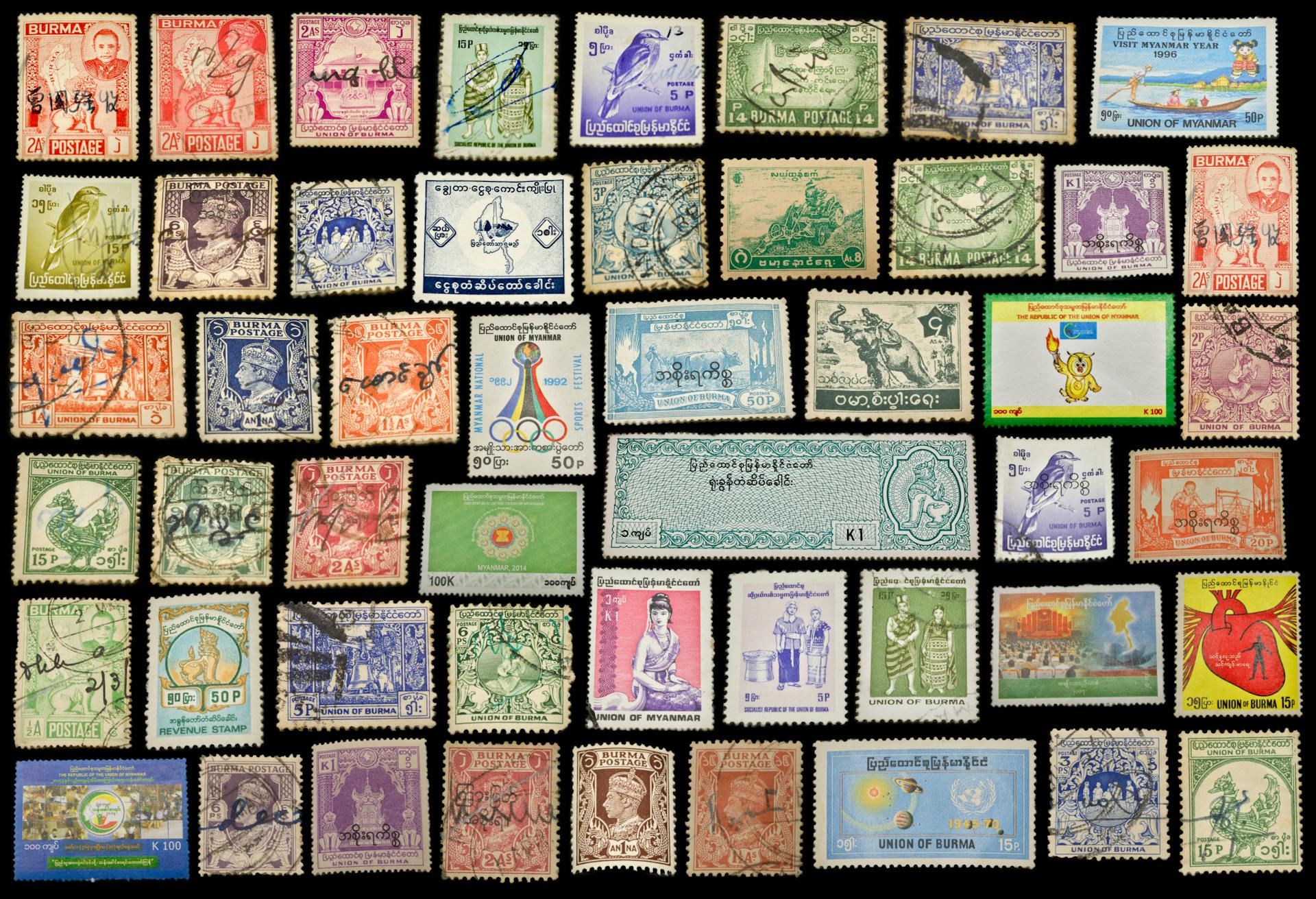
One of the most interesting things about collecting postal history is the variety it offers. No two pieces are quite the same, and even the most ordinary-looking envelope might reveal something unexpected when you look closer.
Here are some key areas of interest for postal history collectors:
- Postmarks – especially rare or unusual ones, or those linked to significant events.
- Cancellations – how the stamp was marked as used (by hand, machine, or slogan).
- Rates and routes – what postage was paid and which path the item took.
- Auxiliary markings – like “Return to Sender,” “Opened by Censor,” or “Missent.”
- The envelope or cover itself – particularly when it’s intact and shows signs of its journey.
By focusing on these areas, you can uncover the stories behind the stamps and create a collection that's both unique and meaningful.
Historical Context
In the 17th century, postal services began to take shape. In 1635, Charles I made the Royal Mail service available to the public for the first time, with postage paid by the recipient. This marked a significant shift towards public accessibility.
The establishment of postal services was a gradual process, with various countries and regions introducing their own systems. By the 18th century, the Parisian postal family Pajot & Rouille had become one of the wealthiest families in France, but the royal French minister of finance, cardinal de Fleury, nationalized the privately run postal enterprise in 1738.
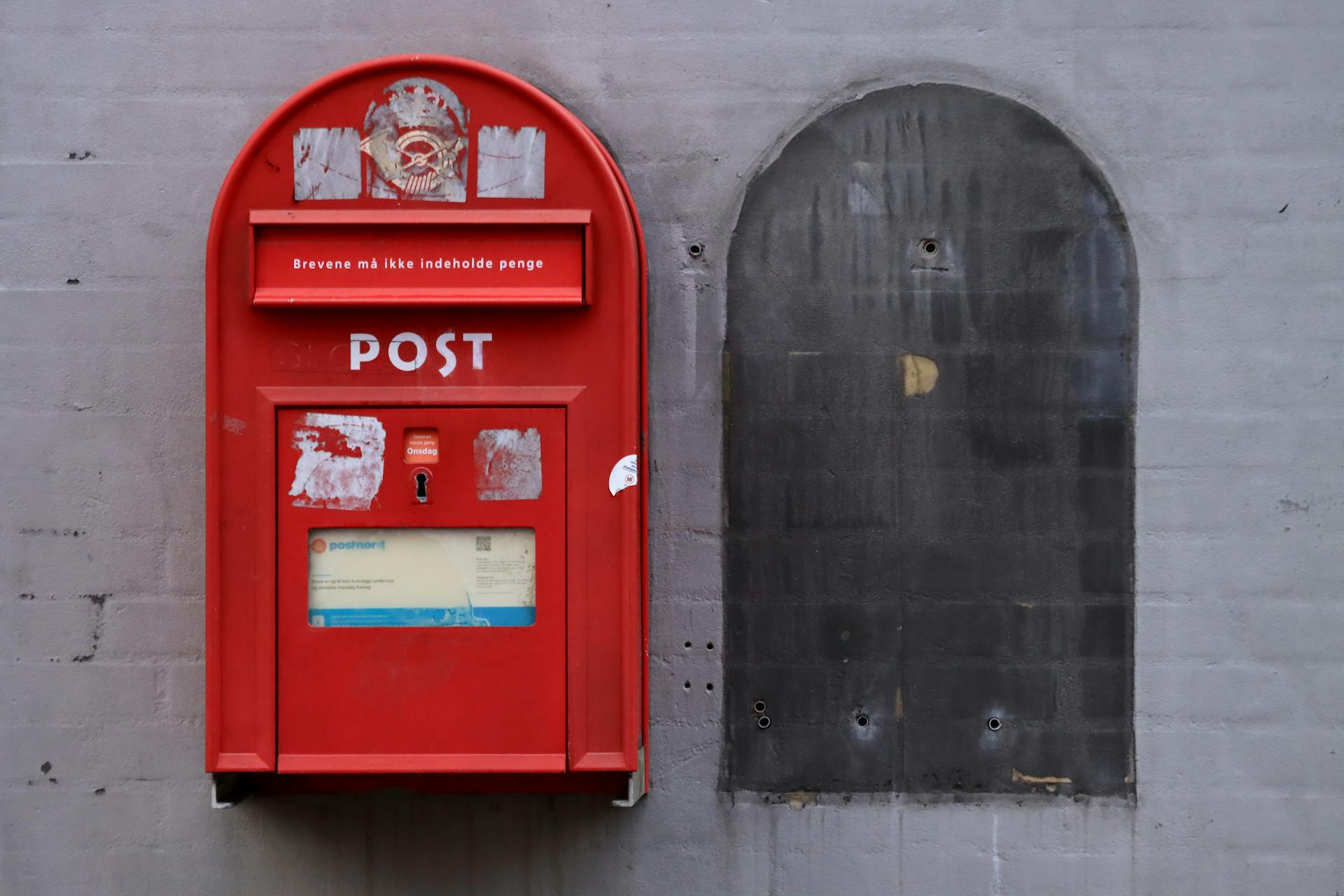
The 19th century saw a surge in the development of postal services, with many countries issuing their first stamps. Here are some notable examples:
As postal services continued to evolve, countries began to form postal unions and agreements to facilitate international mail exchange. The General Postal Union (later Universal Postal Union) was formed in 1874, marking a significant milestone in the development of global postal services.
Intriguing read: Universal Postal Union
A Brief Look at Origins
The history of postal services is a long and fascinating one, with roots dating back to the 15th century. One of the earliest recorded postal services was established in 1497 by Franz von Taxis on behalf of Emperor Maximilian I of the Holy Roman Empire.
In the 16th century, several other countries established their own postal services, including Portugal, Poland, and England. Henry VIII established a "Master of the Posts" in 1516, while Manuel I created the public mail service of Portugal in 1520.
Take a look at this: Lisbon Portugal History
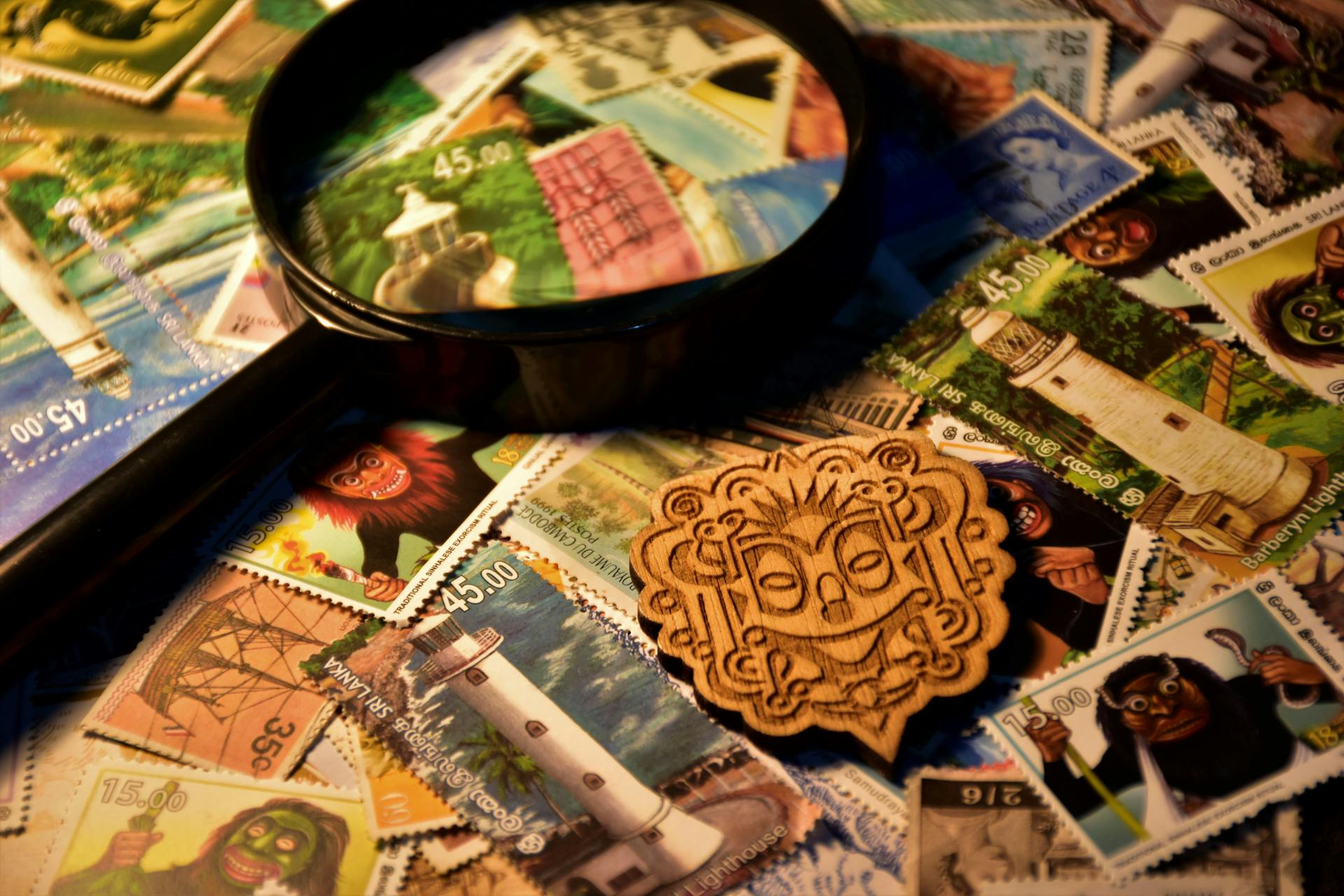
By the 17th century, postal services were becoming more widespread, with the General Post Office being established in England by Charles II in 1660. The first penny post system, known as the London Penny Post, was introduced in 1680 by William Dockwra.
Here are some key dates in the early history of postal services:
- 1497: Franz von Taxis establishes a postal service on behalf of Emperor Maximilian I of the Holy Roman Empire
- 1516: Henry VIII establishes a "Master of the Posts"
- 1520: Manuel I creates the public mail service of Portugal
- 1660: General Post Office established in England by Charles II
- 1680: First penny post system, the London Penny Post, introduced by William Dockwra
The 19th century saw a significant expansion of postal services, with the introduction of postage stamps and the establishment of postal services in many countries. The Penny Black, the world's first postage stamp, was introduced in the UK in 1840, and the first stamps were issued in the United States in 1847.
The 1910s
The 1910s were a time of significant change and innovation in the world of postal history. The first stamps of the Gilbert and Ellice Islands were issued on January 1, 1911.
In the United States, the postal savings system was created in 1911, allowing people to save money through the postal service. This was a major development in the country's financial infrastructure.
The last stamps of Anjouan were issued in 1912, and were soon replaced by stamps from Madagascar. This change marked the beginning of a new era in the postal history of the region.
Australia introduced its first stamps in 1913, replacing the stamps of its former colonies. This move was part of a larger effort to unify the country's postal system.
The first stamps of Albania were issued on May 5, 1913, marking the country's entry into the global postal community. The United States also introduced its parcel post service in 1913, using special stamps for this purpose.
The British forces overprinted Iranian stamps in Bushire in 1915, and used them until October 16 of that year. This was just one example of the many postal innovations that took place during this time period.
Here are some key dates from the 1910s:
- 1911 - First stamps of the Gilbert and Ellice Islands
- 1911 - United States creates a postal savings system
- 1912 - Last stamps of Anjouan
- 1913 - First stamps of Australia and Albania
- 1913 - United States initiates parcel post service
- 1915 - British forces overprint Iranian stamps in Bushire
- 1917 - British armed forces in Palestine issue EEF stamps
- 1918 - United States issues its first airmail stamps
- 1918 - First stamps of the Italian occupation of Trieste and Trentino
- 1919 - First stamps of Armenia, Azerbaijan, and Batum
1920s
In the 1920s, a significant number of countries and territories issued their first stamps. This decade saw the emergence of new postal administrations and the introduction of new philatelic entities.
You might enjoy: Postage Stamps and Postal History of New Zealand
The first stamps of French Upper Volta were issued in 1920, marking the beginning of a new era in the country's postal history.
Pitney Bowes, the largest private US postage company, was formed in 1920. This development had a profound impact on the postal industry, revolutionizing the way mail was processed and delivered.
The year 1921 was marked by the issuance of stamps for East Africa and Uganda Protectorates. This was a significant event, as it introduced a new postal system to the region.
France issued its first stamps for its mandate of Cameroon in 1921. This move was a crucial step in establishing a stable postal system in the territory.
In 1922, the island of Barbuda overprinted stamps of the Leeward Islands, creating a unique and collectible philatelic item. This event highlights the creativity and resourcefulness of postal administrations during this period.
Karelia, a briefly independent entity, issued its first stamps in 1922. This was a significant development, as it marked the emergence of a new postal administration.
The first stamps of British Kenya and Uganda were issued in 1922, introducing a new postal system to the region. This was a crucial step in establishing a stable and efficient postal network.
Curious to learn more? Check out: Postage Stamps and Postal History of East Africa and Uganda Protectorates
The first stamps of Ascension Island were also issued in 1922, marking the beginning of a new era in the island's postal history.
The last stamps of La Aguera were issued in 1922, marking the end of an era for this philatelic entity.
The first stamps of the Irish Free State were issued in 1922, introducing a new postal system to the newly independent country.
Here is a list of some of the notable events in the 1920s:
- 1920 - First stamps of French Upper Volta
- 1920 - Largest private US postage company, Pitney Bowes formed
- 1921 - East Africa and Uganda Protectorates issues stamps
- 1921 - France issues first stamps for its mandate of Cameroon
- 1922 - Barbuda overprints stamps of Leeward Islands
- 1922 - Karelia issues stamps
- 1922 - First stamps of British Kenya and Uganda
- 1922 - First stamps of Ascension Island
- 1922 - Last stamps of La Aguera
- 1922 - First stamps of Irish Free State
- 1923 - First stamps of Jordan (as a British mandate)
- 1923 - First stamps of Transcaucasian SFSR, superseding those of Armenia
- 1923 - First stamps of Iraq
- 1923 - First stamps of Kuwait
- 1924 - First stamps of French Algeria
- 1925 - First stamps of Alaouites
- 1927 - First new stamps for the civil administration in Palestine
- 1928 - First stamps of Spanish Andorra
1930s
The 1930s was a transformative decade for the world, and it's fascinating to see how it impacted the postal services of various countries.
In 1931, French Andorra issued its first stamps on June 16th.
The Indian postal administration played a significant role in the 1930s, issuing the first stamps of Bahrain on August 10, 1933.
Basutoland also joined the ranks of countries with their own stamps in 1933, with the first ones being issued on December 1st.
A common issue of stamps was released in May 1935 to commemorate the Silver Jubilee of King George V.
The Philippines issued its first stamps on November 15, 1935, marking an important milestone in its postal history.
Kenya, Uganda, and Tanganyika also issued their first stamps in 1935.
The United States initiated the Trans-Pacific airmail service in 1935.
Aden and Burma both issued their first stamps on April 1, 1937, with Burma's stamps featuring overprints on India.
A common issue of stamps was released on May 12, 1937, to commemorate the coronation of King George VI.
Stamps were issued for Alexandretta in 1938, but the issue was phased out by November 10th.
Greenland issued its first stamps on December 1, 1938.
Austria's stamps were phased out after the Anschluss in 1938.
Postal censorship was introduced in several countries in 1939, both in combatant and neutral countries, involved in World War II.
1940s
The 1940s was a pivotal decade for the world, and the history of stamps reflects the significant events that took place during this time.
In 1940, the Pitcairn Islands issued their first stamps, marking a new era in the island's postal history.
The United States created highway post offices in 1941, making it easier for people to send mail on the go.
V-mail was introduced by the United States in 1942 as a way to handle the large volume of mail from the armed forces.
The provisional stamps issued for Austria in May 1945 were a temporary solution until a new postal system could be established.
Here's a brief overview of the key events that shaped the history of stamps in the 1940s:
The 1940s was a time of great change and upheaval, and the history of stamps reflects the significant events that took place during this time.
1960s
The 1960s was a decade of significant postal milestones. In 1960, the UK trust territory of the Cameroons issued its first stamps, which were used until 1961.
One notable event was the secession of Katanga from Congo in July 1960, resulting in the issuance of stamps until 1961. This marked a significant change in the region's postal history.
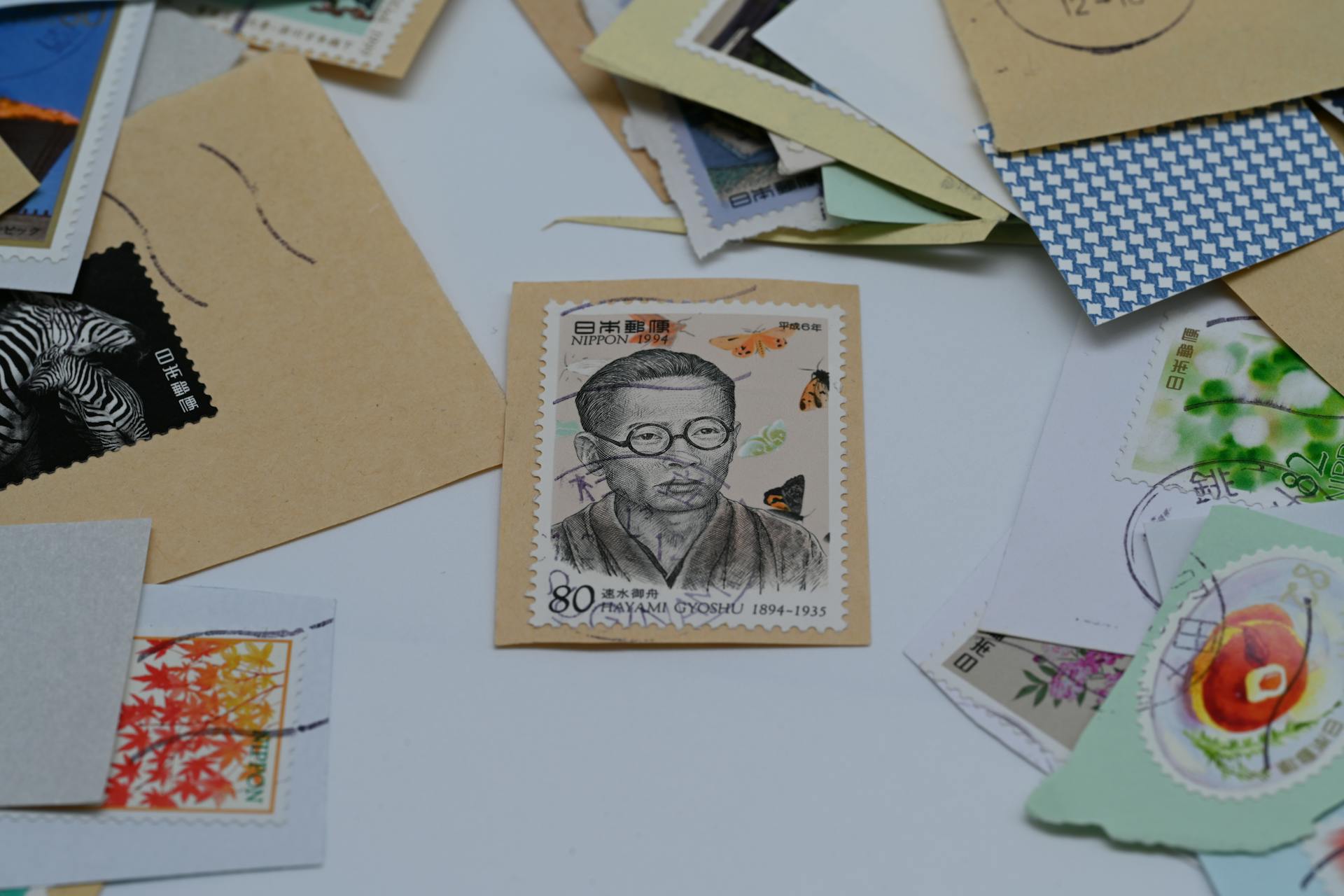
In October 1961, independent Cameroon issued its first stamps, marking a new era in its postal system. The first stamps of independent Burundi were issued on July 1, 1962.
The United States introduced the ZIP Code in 1963, a system that is still used today for mail sorting and delivery. British Antarctic Territory issued its first stamps on February 1, 1963.
Kenya issued its first stamps on December 12, 1963, while the first stamps of independent Malta were issued in 1964. Sierra Leone introduced the world's first self-adhesive stamps on February 9, 1964.
Other notable events include the issuance of the first stamps of Abu Dhabi on March 30, 1964, and Ajman on June 20, 1964.
Geographical and Temporal Studies
The first postage stamp was introduced in the United Kingdom in 1840, during the reign of Queen Victoria.
The British Empire's vast territories and the need for a standardized system led to the introduction of the Penny Black in 1840.
The Penny Black was the first adhesive postage stamp, featuring a portrait of Queen Victoria and was used for prepaying postage on letters weighing up to one ounce.
The introduction of the Penny Black marked the beginning of the modern postal system, where postage stamps became a standard feature of international mail.
This innovation allowed for faster and more efficient mail delivery across the vast territories of the British Empire.
The use of postage stamps also facilitated the exchange of mail between different countries, enabling global communication and commerce.
Sixteenth Century
The sixteenth century was a time of significant development in postal services across the globe. In 1516, Henry VIII established a "Master of the Posts" in England.
One of the most notable postal services established during this time was the Correio Público-Public Post Office in Portugal, created by Manuel I in 1520. This marked the beginning of a public mail service in the country.

A major milestone in the history of postal services was the establishment of Poczta Polska, a postal service of the Polish–Lithuanian Commonwealth, by Sigismund II Augustus on October 18, 1558.
Here are some key dates and events that highlight the progress of postal services in the sixteenth century:
- 1516 - Henry VIII established a "Master of the Posts"
- 1520 - Manuel I creates the public mail service of Portugal, the Correio Público-Public Post Office
- 1558 18 October - Sigismund II Augustus established Poczta Polska, a postal service of the Polish–Lithuanian Commonwealth.
1900s
In the early 1900s, several new postal systems were introduced in various parts of the world.
The first stamps of Kiautchou, a German colony in China, were issued in 1900. This marked the beginning of a new era in postal services in the region.
The Kiautchou stamps were followed by the introduction of stamps in Aitutaki in 1903, as well as in Austrian post offices in Crete.
In 1904, the first stamps of the Panama Canal Zone were issued, reflecting the growing importance of international trade and communication.
Other notable developments in the early 1900s include the introduction of stamps in Brunei, with overprints on Labuan in 1906, and the first stamps of the Belgian Congo under Belgian administration in 1908.
Here's a list of some of the key events in postal history during this period:
- 1900 - Kiautchou, German colony in China
- 1903 - Aitutaki
- 1903 - Austrian post offices in Crete
- 1904 - Panama Canal Zone
- 1906 - Brunei, overprints on Labuan
- 1908 - Belgian Congo under Belgian administration
1950s

In the 1950s, postal services around the world were becoming more organized and efficient.
Cambodia issued its first stamps in 1951, marking an important milestone in the country's postal history.
In the same year, the United Nations also issued its first stamps, reflecting the organization's growing presence on the global stage.
The United States took a significant step forward in 1955 by initiating certified mail service, which helped to ensure the secure delivery of important documents.
The following year, 1956 is not mentioned, but we do know that the Citizens' Stamp Advisory Committee was established in the United States to choose stamp designs that would be of interest to the public.
In 1957, the Citizens' Stamp Advisory Committee was formed to select stamp designs, and they did a great job of choosing stamps that are still popular today.
The West Indies Federation made a joint stamp issue on April 23, 1958, which was a significant event in the region's postal history.
Curious to learn more? Check out: Postage and Revenue Stamp
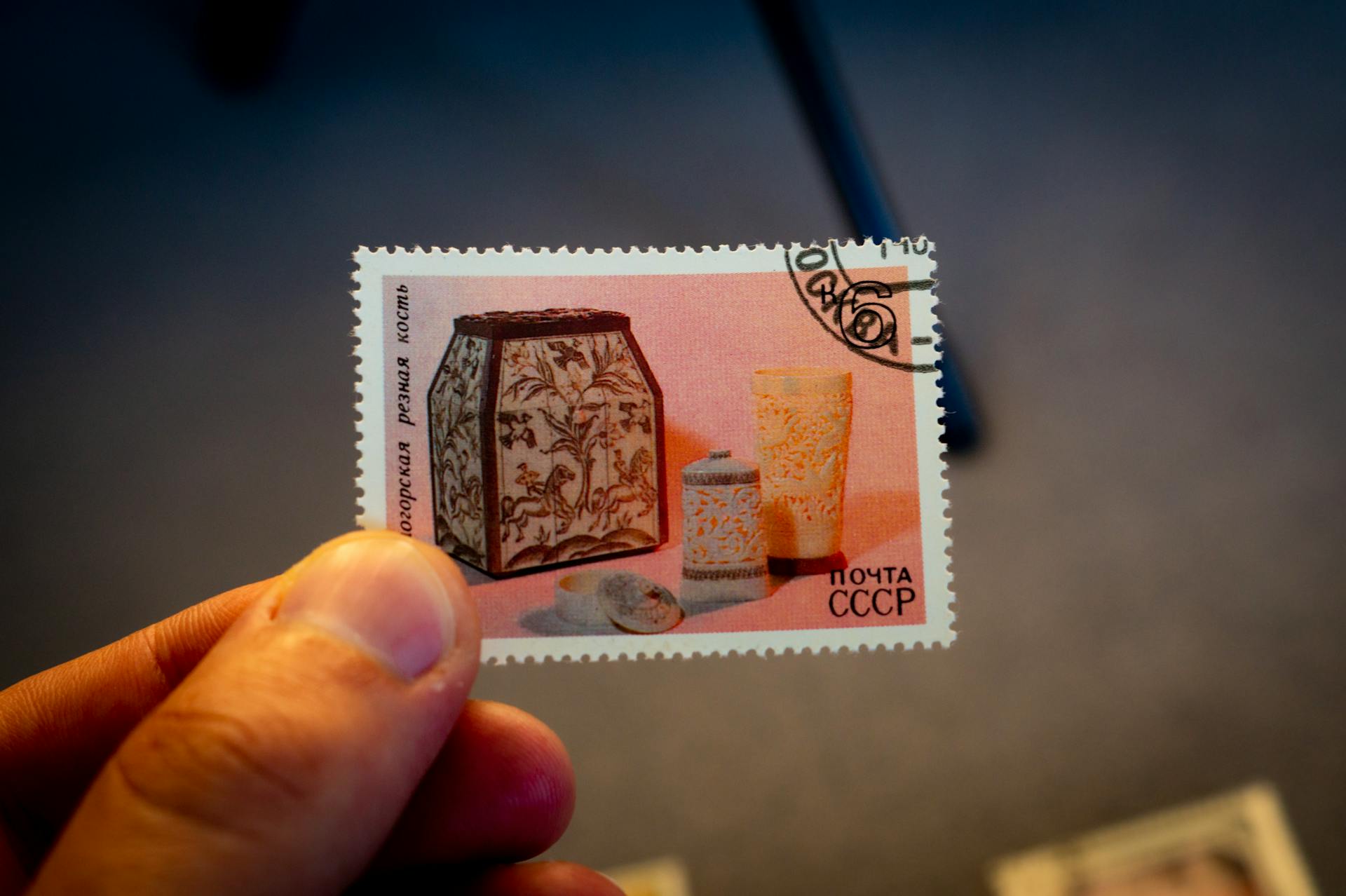
The UK introduced its Postcode scheme in 1959, making it easier for people to send mail within the country.
That same year, the Republic of Upper Volta issued its first stamps, marking the beginning of a new era in the country's postal services.
The USS Barbero and the United States Postal Service attempted to deliver mail via Missile Mail in 1959, a bold and innovative idea that was ahead of its time.
Here's a brief summary of the key events in the postal history of the 1950s:
1990s
In the 1990s, several countries issued their first stamps, marking a significant milestone in philately. Belarus issued its first stamps on March 20, 1992.
Azerbaijan also resumed issuing stamps on March 26, 1992, after a brief hiatus. Kazakhstan joined the ranks of stamp-issuing countries in 1992.
Canada made history in 1994 by introducing the world's first 2-part customizable greetings stamps on January 28.
Geographically Based Studies
Geographically based studies can be a fascinating way to explore postal history. Regional studies are typically based on a geographical area, such as countries of origin, native districts, cities, towns or villages, places associated with family roots, or workplaces.

To make these studies successful, it's best to select a topic that's broad enough. Narrow geographical boundaries can lead to frustration due to the lack of material available. For instance, a study of the postal history of Brünn from 1638 to 1875 might be too narrow.
Geographical based studies can also focus on postal routes, which provide great variety due to the many places and services available along a route. A study of the Thurn und Taxis route from Antwerp to Florence via Mantua would include much of the early postal history of Western Europe.
The era for a geographical based study can add dimension depending on the services available or the changes that took place. This period should seek to tell a complete story and not limit the chosen topic.
For more insights, see: Postage Due
Transportation Based Studies
Transportation based studies offer a fascinating glimpse into the history of mail transport. The study of airmail, for instance, has been extensively documented by specialists, covering topics such as crash covers, Imperial Airways Empire route mail to Australia and South Africa, and CAM or FAM routes to and from the United States.
One notable example of innovative mail transport is balloon mail, which was employed during the Siege of Paris in 1870 to get mail out of the city during the Franco-Prussian War.
Maritime mail is another rich theme, offering a wide variety of possibilities, including the study of a particular shipping line like Cunard, P & O, Danube steamers, or South American packets. Collecting examples of all ships of a particular shipping line can be a challenging but rewarding goal.
Railway mail, which began in 1830 between Liverpool and Manchester in the UK, is another area of study that includes Railway letter stamped mail, TPO and RPO handstamps, and the First transcontinental railroad.
Rocket mail is a specialized collecting area of aerophilately called Astrophilately, with notable examples including USPS rocket mail from 1936 or 1959 launches, and Stephen Smith's 270 rocket launches between 1934 and 1944, which included 80 mail-carrying rockets.
Zeppelin mail, carried on the German Zeppelin airships between 1908 and 1939, is a popular topic among collectors, with up to 12 tons of mail carried on each flight, including mail from within Germany and from trans-Atlantic flights.
U.S. Government
The U.S. Government has played a significant role in shaping the postal system in the United States. The Post Office Act of 1792 established the United States Post Office Department.
The Post Office Act of 1873 allowed for the establishment of rural free delivery, which greatly expanded postal services to rural areas. This change had a significant impact on the postal system.
The Post Office Act of 1873 also led to the creation of the United States Postal Service (USPS) as we know it today. The USPS has continued to evolve over the years.
The USPS has a long history of innovation, from introducing the zip code system to implementing electronic payment systems.
You might like: Postage Stamps and Postal History of the United States
How It Differs From Stamp Collecting
Postal history is a unique and fascinating field that differs significantly from traditional stamp collecting. It's all about the story behind the stamp, rather than the stamp itself.
Unlike stamp collectors, who focus on the technical aspects of stamp production and distribution, postal historians see stamps as historical documents that reveal the social, political, and economic shifts of their time. This means that postal history collectors are more interested in the context of the stamp, rather than its condition or rarity.
Check this out: Postage Stamp Demonetization
A single cover can tell a rich story, reflecting the events and circumstances of its time. For instance, a wartime censor mark can reveal the impact of conflict on postal systems, while a letter from a remote area can show how mail was delivered in challenging conditions.
The specialized area of philatelic history defines postal history as the study of rates charged for postal services provided, routes followed, and special handling of letters. Areas of special interest include disrupted or transitional periods, such as wars and military occupations, and mail to remote areas.
Here are some key differences between postal history and stamp collecting:
- Focus: Postal historians focus on the story behind the stamp, while stamp collectors focus on the stamp itself.
- Condition: Postal historians value items that tell a strong story over those that are particularly rare or pristine.
- Context: Postal historians see the stamp as just one part of a bigger story, while stamp collectors tend to isolate the stamp from its context.
This different approach makes postal history a more accessible way to build a collection with depth and meaning, regardless of budget. By exploring the stories behind the stamps, collectors can gain a deeper understanding of history and its impact on people's lives.
Beyond the Basics
Postal history is all about taking a closer look at the mail itself, not just the stamps. It's about understanding the journey a letter or postcard took.
You can start by examining the postmarks, cancellations, labels, and even the envelope itself. These markings can tell you a lot about the time and place a letter was sent.
Each envelope or postcard is a unique snapshot of a moment in time, and no two are quite the same. You can find the meanings to some of these terms in a glossary of philatelic terms.
To get started with postal history, ask yourself questions like: Why was this stamp used on this letter? Where was it sent, and how long did it take? What do the markings tell us about the time and place?
This approach can help you uncover the stories behind the stamps and the mail itself.
Sources
- https://en.wikipedia.org/wiki/Postal_history
- https://library.si.edu/research/postal-history-philately
- https://startstampcollecting.com/what-is-postal-history/
- https://en.wikipedia.org/wiki/Timeline_of_postal_history
- https://www.linns.com/insights/what-exactly-is-postal-history-and-why-should-you-collect-it-.html
Featured Images: pexels.com


